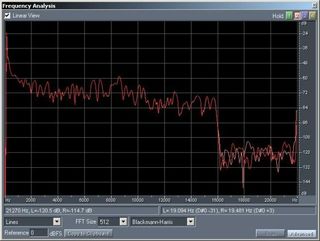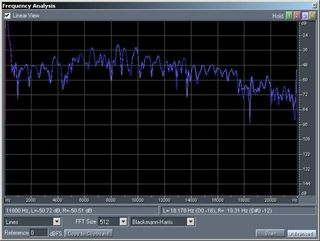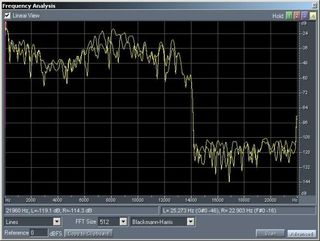Mobile Music: 2U4U DMR-300 WMA Player
Audio Comparison: Putting MP3, WMA, And AAC Under A Microscope, Continued

The MP3-encoded version (in red) of the track had some interesting properties. It seems that the compression algorithm had cut off all sound above 15.8 kHz. This technique is useful in shrinking the resulting MP3 in size and banks on the fact that very little of the sound resides in 15.8 kHz+ range. The leveling of the audio at low, mid, and high frequency appeared to be flat.

The AAC file (in blue) as shown by the graph, held pretty much true to the original wav file in terms of level at low, mid, and high frequencies. The only major deviation from the WAV file was in the 20 kHz+ range, which we cannot hear anyway.

The results for the WMA file in the frequency analysis were quite good. Like the ACC file, the leveling of the WMA seemed to have a high fidelity to the original track. It had, however, a curiously low frequency cutoff at around 14 kHz, well within the range of human hearing.
The frequency analysis alone cannot tell which file format is better or worse. What is becoming obvious, though, is how the MP3 file stands out from the other two files in terms of lower level fidelity. These signs definitely show that MP3 is aging.
Stay On the Cutting Edge: Get the Tom's Hardware Newsletter
Join the experts who read Tom's Hardware for the inside track on enthusiast PC tech news — and have for over 25 years. We'll send breaking news and in-depth reviews of CPUs, GPUs, AI, maker hardware and more straight to your inbox.
Current page: Audio Comparison: Putting MP3, WMA, And AAC Under A Microscope, Continued
Prev Page Audio Comparison: Putting MP3, WMA, And AAC Under A Microscope Next Page How Does It All Sound?Most Popular



